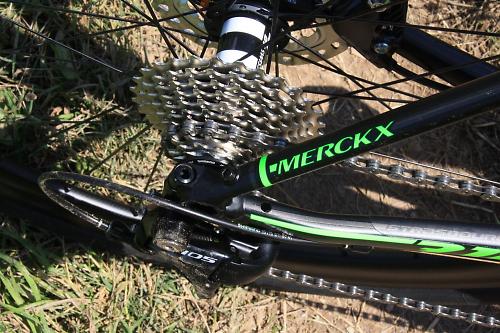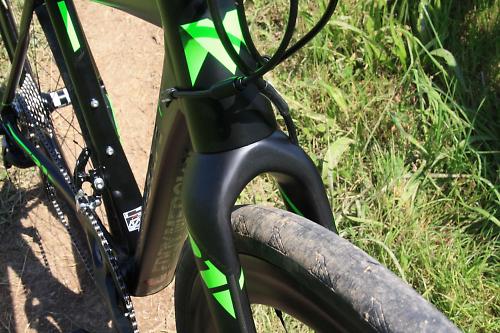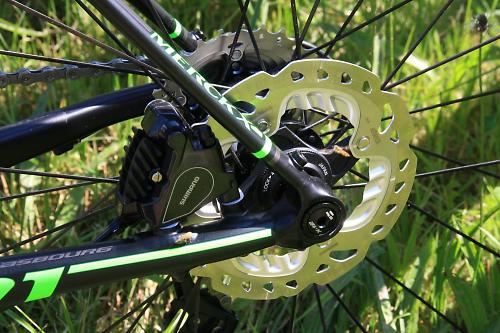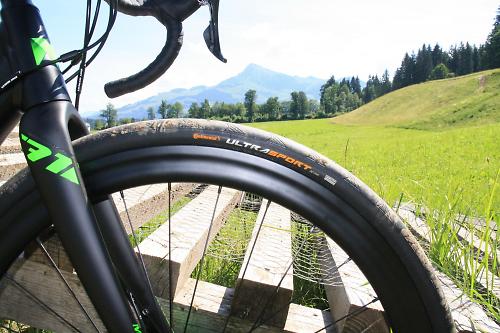- News
- Reviews
- Bikes
- Accessories
- Accessories - misc
- Computer mounts
- Bags
- Bar ends
- Bike bags & cases
- Bottle cages
- Bottles
- Cameras
- Car racks
- Child seats
- Computers
- Glasses
- GPS units
- Helmets
- Lights - front
- Lights - rear
- Lights - sets
- Locks
- Mirrors
- Mudguards
- Racks
- Pumps & CO2 inflators
- Puncture kits
- Reflectives
- Smart watches
- Stands and racks
- Trailers
- Clothing
- Components
- Bar tape & grips
- Bottom brackets
- Brake & gear cables
- Brake & STI levers
- Brake pads & spares
- Brakes
- Cassettes & freewheels
- Chains
- Chainsets & chainrings
- Derailleurs - front
- Derailleurs - rear
- Forks
- Gear levers & shifters
- Groupsets
- Handlebars & extensions
- Headsets
- Hubs
- Inner tubes
- Pedals
- Quick releases & skewers
- Saddles
- Seatposts
- Stems
- Wheels
- Tyres
- Health, fitness and nutrition
- Tools and workshop
- Miscellaneous
- Buyers Guides
- Features
- Forum
- Recommends
- Podcast
TECH NEWS
First look: Eddy Merckx Strasbourg 71 aluminium gravel bike
Love or loathe them, gravel and adventure bikes are sweeping through the cycling industry, but what started as a trend born from long distance gravel races in the US, is now being adopted for more versatile all-road bikes by European bicycle brands. Like Belgian company Eddy Merckx, which has just unveiled the new Strasbourg 71 in Austria today at Eurobike Live - Tony is out there and has just sent back this report.

Ignore the hype, and there’s something genuinely interesting about the new wave of gravel and adventure bikes. Splitting the difference between an endurance road bike and a cyclocross bike, these new bikes provide huge tyre clearance, stable geometry well suited to tackling a multitude of surfaces and terrain, and with mudguard and rack mounts for riding to work or touring duties. They're a lot less restricted than dedicated road or cyclocross bikes, able to ride across any terrain and can be flipped between a road or 'cross bike by a simple tyre change.
- Buyer’s guide to gravel and adventure bikes plus 11 of the Best

The new Merckx Strasbourg 71 appears to follow this growing trend. But first that name. The company’s new naming convention, introduced just a couple of years ago, smartly plays on the history of the company’s founder, and this new model is named after a mountain stage of the 1971 Tour de France which Eddy Merckx won. Of course he also won the race outright as well, and as well as the yellow jersey, scooped the green points jersey too. And that stage win's significance to a gravel/adventure bike? Well the stage finished on a stretch of gravel road when on which Merckx beat Roger de Vlaeminck by a whisker.

And now let’s look at the bike. We don’t have all the details on it just yet, but here’s what we know so far. It’ll have an aluminium frame with a carbon fibre fork, with space for up to 38mm tyres - it’ll come specced with 32mm tyres by the look of the bike Tony has been riding.

There are thru-axles at both ends along with disc brakes, and all cables and brake lines are internally routed, including at the fork. The frame and fork feature neatly concealed mudguard and rack mounts.

The pictured size small bike clearly has a very compact frame with a low slung top tube, that’ll be a bonus on uneven ground with a bit more top tube clearance. A 27.2mm seatpost with a generous amount of extension should provide a good deal of deflection, aiding comfort when battling over rougher terrain. The frame also uses Shimano's Flat Mount disc brake standard, also now used by SRAM. This seemed pretty much universal on all the disc braked road bikes on show at Eurobike Live. As were 40mm rotors - the few bikes we saw with 60mm rotors would we were told come witht the smaller sized rotors on production models.

The Merckx also features thru-axles front and rear - Syntace X12s, like the Cannondale Slate. That makes sense on a bike that is going to venture offroad. Unlike the Slate though the Merckx 1971s front fork is rigid rather (and its got two fork legs). That didn't seem to hold it back in my very brief off road foray - a ride up and down a section of singletrack and across a field (off-piste - pushing the envelope there). Handling was reassuringly of the point and shoot variet and those tyres had both bags of grip and lots of comfort. If the Slate's 650b wheels with 42mm tyres give an outer wheel circumference that's the same as a 700c wheel with a 23c tyre you can imagine the mile (and bump) swallowing capabilities of of the Merckx 71's 700c/38mm combo.
The Merckx has mounting points for a rear rack and mudguards - including a hidden central mount for the front guard - and what looked to me like mounting points on the inside of the fork legs, although the guy I spoke to on the Mercks booth reckoned you would need to use clips to mount guards to the fork legs.

It all sounds a bit like a tourer then I hear you say. Yep, sounds a lot like a tourer, but with sharper more direct handling - the stem is certainly no barge like tiller. My (brief) impressions were of an adventure touring bike with a performanc edge to it. Certainly the riding position is fairly aggresive - again that's not dissimilar to the Slate - Cannondale describe that bike's riding position as being between the race postion of the Evo or the CAAD12 and the endurance position of the Synapse.

The Merckx 1971 I rode had a healthy stack of spacers suggesting ample opportunity for getting down lower at the front if you wanted to. I don't have a geometry chart, but I suspect that the head angle is not as slack as the Slate's and of course the rear chainstays are longer - so while the Slate gets its claimed ride stability from it's longer centre to front distance the Merckx achieves it with a longer back end and, I would say, a tighter front end.

The burly box section down tube, deep head tube and seat tube which flares to make the widest possible junction with the bottom bracket all help keep things taught, but in my very brief ride that wasn't at the expense of comfort - the Mercks delivered a pleasingly plush ride.
All in all it's a very tidy looking machine with internal cable routing and nice touches like the mudguard mounting bridge between the rear stays. And on first impressions at least it seems well thought out too.

Merckx say the bike will be available in the UK from the end of September, no UK price has been set yet but it will sell for €3,000 in Europe. I'm not sure if that's for this model, but I'll find out. If it is that might be a little expensive in my opinion for an aluminium bike with a Shimano 105 drivetrain. Fingers crossed on that. It would certainly be a bike I'd like to spend a longer and more concentrated amount of time on in the future.
road.cc's founder and first editor, nowadays to be found riding a spreadsheet. Tony's journey in cycling media started in 1997 as production editor and then deputy editor of Total Bike, acting editor of Total Mountain Bike and then seven years as editor of Cycling Plus. He launched his first cycling website - the Cycling Plus Forum at the turn of the century. In 2006 he left C+ to head up the launch team for Bike Radar which he edited until 2008, when he co-launched the multi-award winning road.cc - finally handing on the reins in 2021 to Jack Sexty. His favourite ride is his ‘commute’ - which he does most days inc weekends and he’s been cycle-commuting since 1994. His favourite bikes are titanium and have disc brakes, though he'd like to own a carbon bike one day.
Latest Comments
- Rendel Harris 1 sec ago
Well it pretty much does, a 70kg rider on an 11.6kg bike will need to put out 384W to climb a 10% gradient at 15km/h, to do it at the same speed on...
- Steve K 15 min 15 sec ago
Prompted by this thread, I've just bought a pair of the Swrve's. A couple of comments - ...
- hawkinspeter 12 min 19 sec ago
You can add them to the original forum post, but you need to host the images elsewhere (e.g. Imgur) and then provide a direct image link between to...
- Chris RideFar 43 min 55 sec ago
Conclusion: If you want to simplify tyre maintenance tasks, stick to hooked rims and inner tubes. I'm a pro' bike mechanic, and I wouldn't choose...
- Simon E 1 hour 55 min ago
Unless you know it's having an effect then it is as useful as Hirsute's little prayer. I'd put more faith in defensive riding, a shoulder check, an...
- Bungle_52 2 hours 32 min ago
A few observations...
- Bungle_52 2 hours 38 min ago
It's interesting that evading the police was considered dangerous driving but the driver that seriously injured Mr Pike in the link below was only...
- gekebiba 3 hours 11 min ago
Thank you, everyone, for your suggestions and support. ...
- spen 3 hours 46 min ago
I often wonder if these councillors and campaigners realise how little "infrastructure" could be provided for the money available. In civil...


























Add new comment
2 comments
I have no idea why the gravel/adventure bikes are coming out so expensive!
I built my Ritchey Swiss Cross for less than £2500. Ok, no mudguard mounts and it "only" has TRP Hy Rd.
My Bivio X has mounts though and the frames of that was only £625.
This frame has heritage, it will be very very good I am sure. But it is a lot. I like it mind.
I like! That genuinely looks like a good option, down to the short head-tube. Fitted with something like a specialized adjustable stem or a flippable one, it really looks like a do it all bike. Winter trainer, light off-road, summer touring, club-runs. Everything that I would want to do on a bike except time-trial (& I have a dedicated machine for that). £2500 though...?